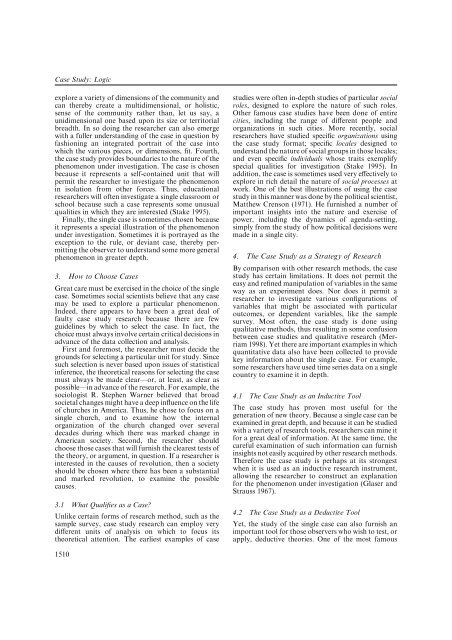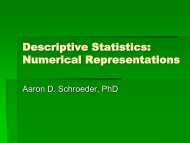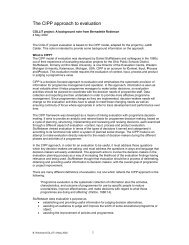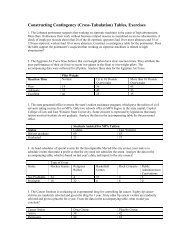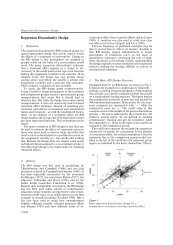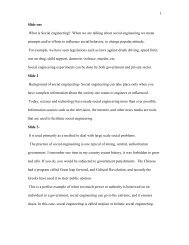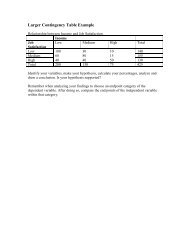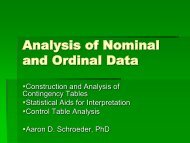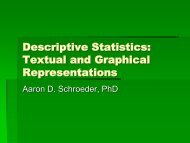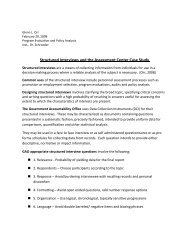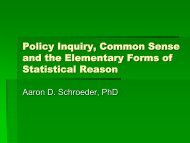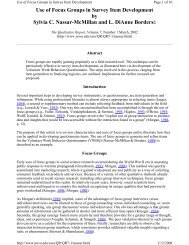Case Study: Logic
Case Study: Logic
Case Study: Logic
You also want an ePaper? Increase the reach of your titles
YUMPU automatically turns print PDFs into web optimized ePapers that Google loves.
<strong>Case</strong> <strong>Study</strong>: <strong>Logic</strong><br />
explore a variety of dimensions of the community and<br />
can thereby create a multidimensional, or holistic,<br />
sense of the community rather than, let us say, a<br />
unidimensional one based upon its size or territorial<br />
breadth. In so doing the researcher can also emerge<br />
with a fuller understanding of the case in question by<br />
fashioning an integrated portrait of the case into<br />
which the various pieces, or dimensions, fit. Fourth,<br />
the case study provides boundaries to the nature of the<br />
phenomenon under investigation. The case is chosen<br />
because it represents a self-contained unit that will<br />
permit the researcher to investigate the phenomenon<br />
in isolation from other forces. Thus, educational<br />
researchers will often investigate a single classroom or<br />
school because such a case represents some unusual<br />
qualities in which they are interested (Stake 1995).<br />
Finally, the single case is sometimes chosen because<br />
it represents a special illustration of the phenomenon<br />
under investigation. Sometimes it is portrayed as the<br />
exception to the rule, or deviant case, thereby permitting<br />
the observer to understand some more general<br />
phenomenon in greater depth.<br />
3. How to Choose <strong>Case</strong>s<br />
Great care must be exercised in the choice of the single<br />
case. Sometimes social scientists believe that any case<br />
may be used to explore a particular phenomenon.<br />
Indeed, there appears to have been a great deal of<br />
faulty case study research because there are few<br />
guidelines by which to select the case. In fact, the<br />
choice must always involve certain critical decisions in<br />
advance of the data collection and analysis.<br />
First and foremost, the researcher must decide the<br />
grounds for selecting a particular unit for study. Since<br />
such selection is never based upon issues of statistical<br />
inference, the theoretical reasons for selecting the case<br />
must always be made clear—or, at least, as clear as<br />
possible—in advance of the research. For example, the<br />
sociologist R. Stephen Warner believed that broad<br />
societal changes might have a deep influence on the life<br />
of churches in America. Thus, he chose to focus on a<br />
single church, and to examine how the internal<br />
organization of the church changed over several<br />
decades during which there was marked change in<br />
American society. Second, the researcher should<br />
choose those cases that will furnish the clearest tests of<br />
the theory, or argument, in question. If a researcher is<br />
interested in the causes of revolution, then a society<br />
should be chosen where there has been a substantial<br />
and marked revolution, to examine the possible<br />
causes.<br />
3.1 What Qualifies as a <strong>Case</strong>?<br />
Unlike certain forms of research method, such as the<br />
sample survey, case study research can employ very<br />
different units of analysis on which to focus its<br />
theoretical attention. The earliest examples of case<br />
studies were often in-depth studies of particular social<br />
roles, designed to explore the nature of such roles.<br />
Other famous case studies have been done of entire<br />
cities, including the range of different people and<br />
organizations in such cities. More recently, social<br />
researchers have studied specific organizations using<br />
the case study format; specific locales designed to<br />
understand the nature of social groups in those locales;<br />
and even specific indiiduals whose traits exemplify<br />
special qualities for investigation (Stake 1995). In<br />
addition, the case is sometimes used very effectively to<br />
explore in rich detail the nature of social processes at<br />
work. One of the best illustrations of using the case<br />
study in this manner was done by the political scientist,<br />
Matthew Crenson (1971). He furnished a number of<br />
important insights into the nature and exercise of<br />
power, including the dynamics of agenda-setting,<br />
simply from the study of how political decisions were<br />
made in a single city.<br />
4. The <strong>Case</strong> <strong>Study</strong> as a Strategy of Research<br />
By comparison with other research methods, the case<br />
study has certain limitations. It does not permit the<br />
easy and refined manipulation of variables in the same<br />
way as an experiment does. Nor does it permit a<br />
researcher to investigate various configurations of<br />
variables that might be associated with particular<br />
outcomes, or dependent variables, like the sample<br />
survey. Most often, the case study is done using<br />
qualitative methods, thus resulting in some confusion<br />
between case studies and qualitative research (Merriam<br />
1998). Yet there are important examples in which<br />
quantitative data also have been collected to provide<br />
key information about the single case. For example,<br />
some researchers have used time series data on a single<br />
country to examine it in depth.<br />
4.1 The <strong>Case</strong> <strong>Study</strong> as an Inductie Tool<br />
The case study has proven most useful for the<br />
generation of new theory. Because a single case can be<br />
examined in great depth, and because it can be studied<br />
with a variety of research tools, researchers can mine it<br />
for a great deal of information. At the same time, the<br />
careful examination of such information can furnish<br />
insights not easily acquired by other research methods.<br />
Therefore the case study is perhaps at its strongest<br />
when it is used as an inductive research instrument,<br />
allowing the researcher to construct an explanation<br />
for the phenomenon under investigation (Glaser and<br />
Strauss 1967).<br />
4.2 The <strong>Case</strong> <strong>Study</strong> as a Deductie Tool<br />
Yet, the study of the single case can also furnish an<br />
important tool for those observers who wish to test, or<br />
apply, deductive theories. One of the most famous<br />
1510


